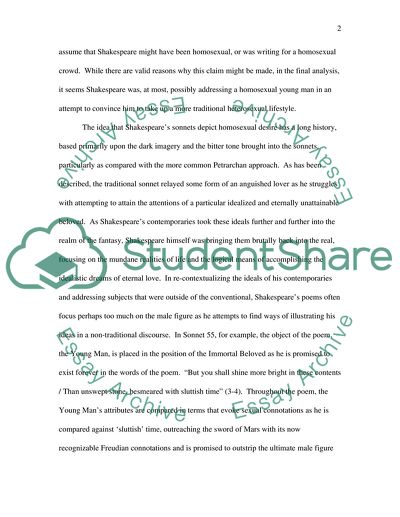Cite this document
(Shakespeare's Use of Homosexual Imagery in His Sonnets Essay, n.d.)
Shakespeare's Use of Homosexual Imagery in His Sonnets Essay. Retrieved from https://studentshare.org/literature/1711343-critically-examine-shakespeares-use-of-homosexual-imagery-in-his-sonnets
Shakespeare's Use of Homosexual Imagery in His Sonnets Essay. Retrieved from https://studentshare.org/literature/1711343-critically-examine-shakespeares-use-of-homosexual-imagery-in-his-sonnets
(Shakespeare'S Use of Homosexual Imagery in His Sonnets Essay)
Shakespeare'S Use of Homosexual Imagery in His Sonnets Essay. https://studentshare.org/literature/1711343-critically-examine-shakespeares-use-of-homosexual-imagery-in-his-sonnets.
Shakespeare'S Use of Homosexual Imagery in His Sonnets Essay. https://studentshare.org/literature/1711343-critically-examine-shakespeares-use-of-homosexual-imagery-in-his-sonnets.
“Shakespeare'S Use of Homosexual Imagery in His Sonnets Essay”, n.d. https://studentshare.org/literature/1711343-critically-examine-shakespeares-use-of-homosexual-imagery-in-his-sonnets.


